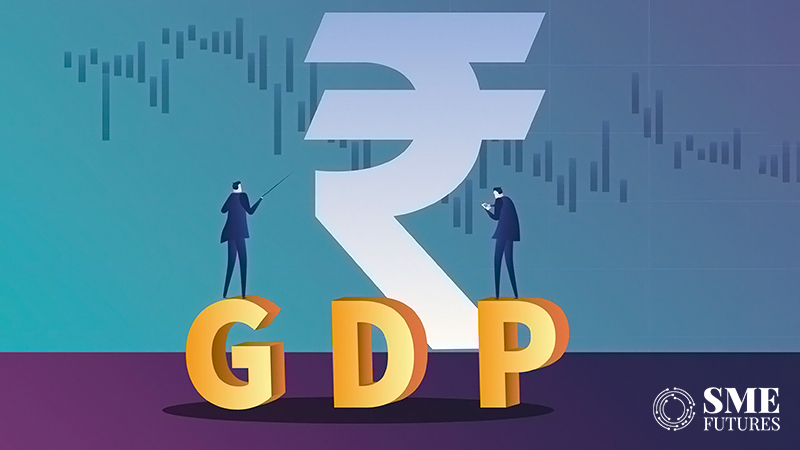In a surprising turn of events, India’s Gross Domestic Product (GDP) witnessed a significant growth of 7.6 per cent YoY during the second quarter of the fiscal year 2023-24, following the robust 7.8 per cent YoY in the first quarter. Suman Chowdhury, Chief Economist at Acuité Ratings and Research, provided insights into the key drivers behind this unexpected surge.
The standout performer contributing to the impressive GDP figures was the manufacturing sector, recording a remarkable growth of 13.9 per cent YoY. Chowdhury outlined three primary factors influencing this surge: the resilient performance of the steel and cement sector due to strong demand from infrastructure projects, lower input costs boosting profitability margins of the sector, and steady domestic consumption demand, particularly in the auto sector.
However, the positive momentum in the manufacturing sector contrasts with a less favourable scenario on the consumption side. “Private Final Consumption Expenditure (PFCE) witnessed modest growth at 3.1 per cent YoY, signalling weakness in rural demand. In our opinion, this is largely due to a weakness in rural demand and it is being reinforced by the low growth in the agricultural sector which has been pegged at 1.2 per cent YoY,” he said.
The services segments experienced moderate growth, reflecting a moderation of pent-up demand. Notably, government expenditure showed a robust growth of 12.1 per cent, attributed to increased spending on subsidies and the rural sector. The infrastructure sector also contributed to strong investments, growing at 12.4 per cent YoY.
Given the exceptional growth in Q2FY24 and the average 7.7 per cent YoY growth in H1FY24, Chowdhury suggested a potential review of the initial 6.0% growth forecast for the full year. “Nevertheless, we acknowledge that the base factor will not be in action in the second half of the year and there are material risks of lower agricultural output and weaker rural consumption,” he said.
However, we believe that any rate hike is unlikely although the system liquidity may be kept relatively tight. Any rate cut decision appears unlikely over the next 6 months, he adds.
Looking ahead to the Monetary Policy Committee (MPC) meeting, Chowdhury anticipated the Reserve Bank of India (RBI) to take note of the robust growth momentum and the potential for inflationary pressures, especially if food inflation is affected by El Nino weather events. Despite these considerations, he expressed skepticism about a rate hike, deeming it unlikely, while suggesting that any rate cut decision is improbable over the next six months.











